When I grow up I want to… be an author.
As a child I wrote story after story, taking inspiration from the smallest things and imagining a hardback future. But as an adult, I’m a realist: the statistical chances of writing success are far more potent than my dreams. I have a family that I love. I have a job that I enjoy. I have responsibilities.
I still write though, not for a career but because putting one word next to another carries with it the same pleasure and satisfaction as a well-placed Carcassonne tile or rolling more than six brains on a turn in a game of Zombie Dice.
Which brings me to the subject of dice. The great totemic randomisers. Cuboidal conveyors of chance. Stake-selecting six-siders. And other writerly wrubbish.
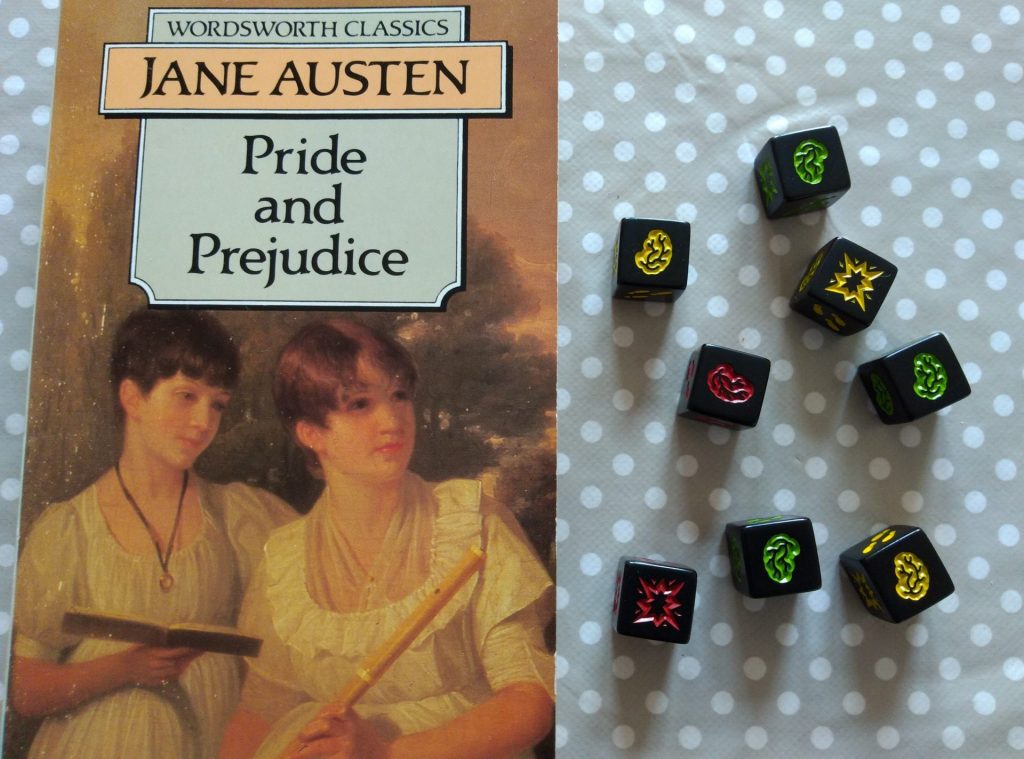
Dice feature in some of the most thematic tabletop experiences around, including the majority of roleplaying games where dice separate benign Game Mastering from complete authorial dictatorship. Dice oxygenate games with an unpredictable element of chance; a single roll can bring a game to life, a shot of electricity delivered to the narrative’s neck-bolts. To briefly explore a single franchise: the Empire and Rebels are dice-iples to the dice-side in Imperial Assault, Star Wars: X-Wing/Armada, Star Wars: Destiny, Star Wars: Rebellion, and even Star Wars: The Roleplaying Game. Star Wars loves dice.
Yet dice can also be used to create stories.
Such dice have pictures or words that act as inspirational springboards. You can use them to play games, cultivate children’s creativity, as aids in the classroom, or even to develop your writing skills (check out this inspired list of uses).
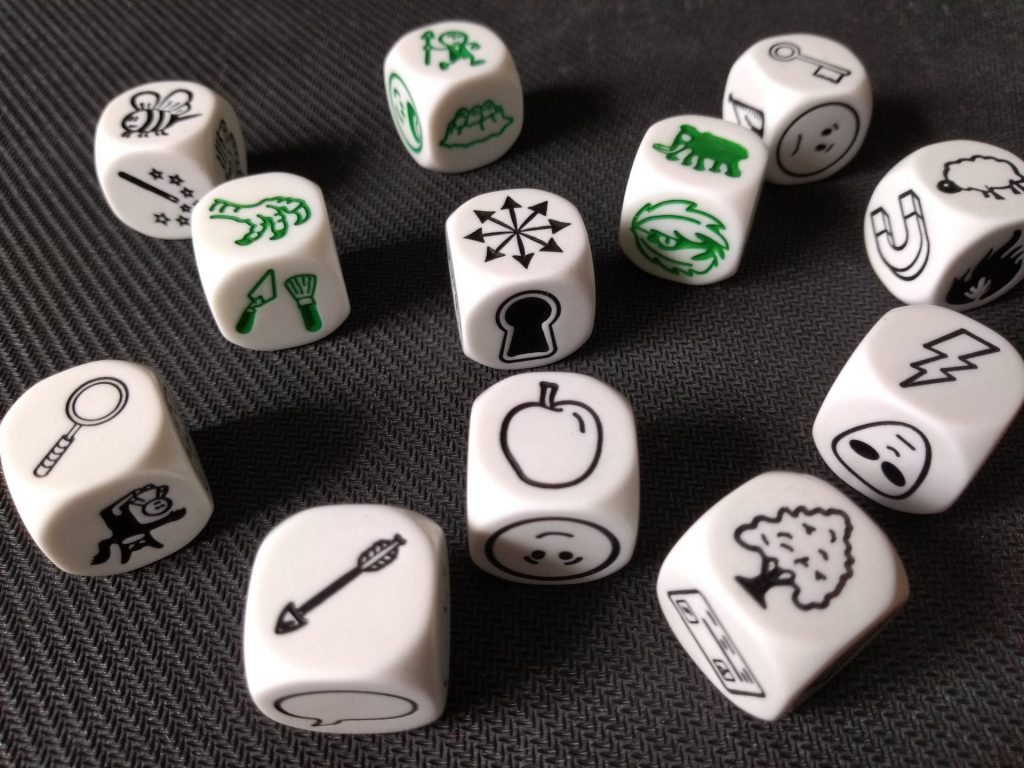
These types of dice stimulate the imagination. So, you’ve rolled a cow, some string and a globe? Maybe your children will invent a story about how Super-Cow tows the earth to safety. Perhaps you’ll write about how you celebrated Earth Day with a sumptuous roast beef dinner. My toddler might simply try drawing a round smiling cow-face with four legs and no body. This sort of cognitive flexibility is crucial for children’s development and for creative writing.
There are a number of different types of storytelling dice available; have a look below to see what works best for you.
Free-Form Picture Dice
What are they – Dice with different images on each side.
How do you use them – Roll them all and use the prompted ideas wherever feels right. Roll one at a time and add each new image to an ongoing story. Or a mix of these approaches.
Example – Rory’s Story Cubes. What started off as a neat orange box of nine dice has expanded into an empire with nine sets of nine dice, a dozen or so themed three dice sets, several licenced dice sets (yes, of course there’s a Star Wars set) and even a board game (Untold). All told there are twenty-nine different sets, seven compilations, a giant version plus the board game at the time of writing. It’s best to start with the original set and then you can mix and match from there. The dice are tactile with a silky finish, whilst the images manage to balance being specific enough to prompt ideas but broad enough to allow for multiple interpretations – it’s definitely an apple but there’s nothing in the image to suggest what you do with it.
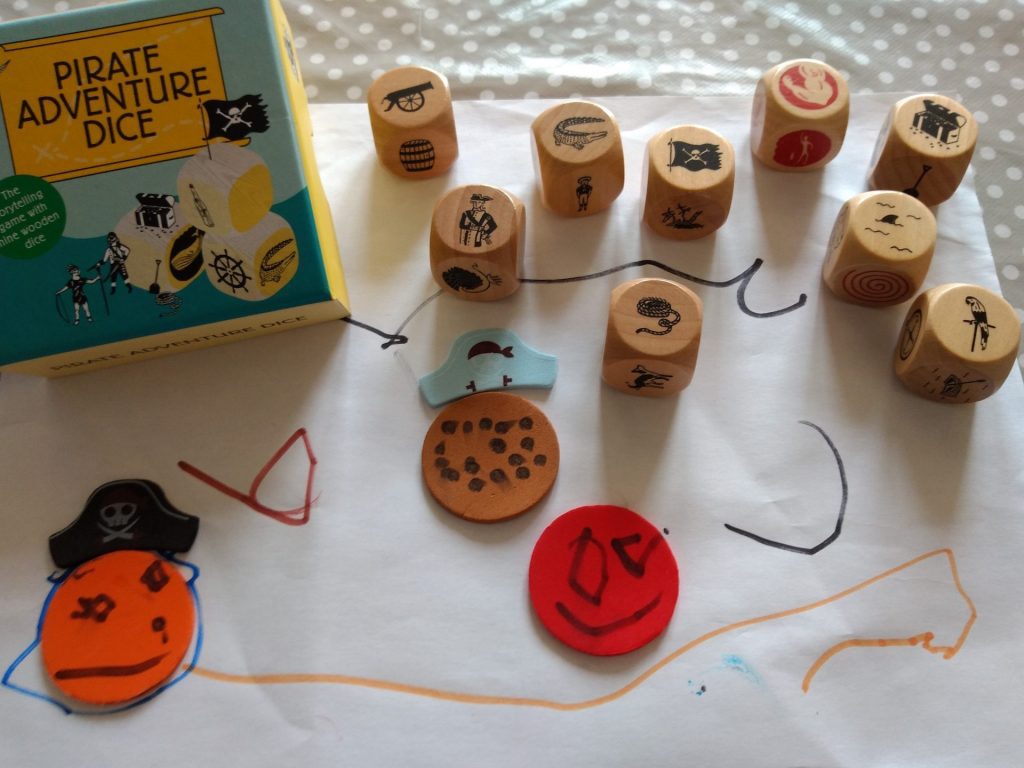
Example – Magma For Laurence King Dice Sets contain nine large wooden dice with beautiful illustrations by Hannah Waldron. Each set has a specific theme (Fairy Tales, Pirates, Ghosts and Space) and contains a special die that adds a theme-related superpower when a specific symbol is rolled. It’s a great narrative jolt discovering that the hero can breathe underwater or has binocular vision (examples from the pirate set). The images are not as crystal clear as Rory’s Story Cubes, but they’re more evocative and for roughly the same price you’re getting a themed set of dice rather than having to purchase add-ons.
Free-form picture dice are the most common form of storytelling dice on the market so I’ve only highlighted two that seem especially noteworthy. Most sets contain nine dice, although the Imagidice! set contains twelve (and predates pretty much all other story-telling picture dice). There’s also nothing stopping you from mixing multiple brands together.
Pros – Free-form picture dice are the most popular for a reason – each image can be used and interpreted however you want: the horse could be a mode of transport, the hero or even dinner. For anyone using them as a writing exercise there’s a world of possibilities and little to hold you back.
Cons – That openness and flexibility can be a little overwhelming: nine images staring up at you doesn’t automatically prompt an easy way to tell a story around them. Younger users in particular may need an adult to assist them when getting started.
Structured Picture Dice
What are they – Sets with dice representing particular story elements: one die might have different hero-types, another die might be for the location, etc.
How do you use them – Structured dice give you the bones of a story from a single roll and ask you to fill in the blanks. Maybe the story is set in a laboratory, your protagonist is a detective and there’s a telephone that plays an integral part – from these central elements the story is yours to tell.
Example – Story Time Dice are sets of seven polyhedral dice corresponding to different story elements. The themed sets are especially fun – a shimmery fairy tale set and a glow-in-the-dark spooky story set. The polyhedral shapes increase the number of options for each story element – there’s only one items die but it has twenty sides providing plenty of options. The dice are chunky, interesting and immediately engaging, although some of the images can be hard to interpret without the instructions.

Example – Junior Learning Roll-A-Story Dice contains ten six-sided dice, each with its own story element, such as people, actions, objects, and feelings, along with a bag to hold them all. The dice are colour-coded and the illustrations are similar to those on Rory’s Story Cubes – very clear and easy to interpret. They aren’t as instantly attention-grabbing as the Story Time Dice but, in the UK at least, they’re much easier to get hold of.
Pros – It can be hard to pull a coherent plot from a bunch of jumbled images so Structured Picture Dice are great for younger children or those who want a few elements pre-formed. They provide just enough of a framework to reassure you, whilst letting you build whatever tale you like around it – after all, the detective you rolled doesn’t have to answer that telephone.
Cons – The structure may be restrictive if your primary use for the dice is as a writing tool or you’re using them with older kids (although there’s nothing forcing you to use the images as their designated story elements). You can also achieve a similar effect by pre-assigning story elements to individual Free-Form Picture Dice.
Word-Prompt Dice
What are they – Dice where the sides have words on them instead of pictures. They could be components of a story or even a starting phrase.
How do you use them – Similar to the Picture Dice, roll one or more dice and use the words to inspire your creativity.
Example – Learning Resources Writing Prompt Cubes are a set of six foam dice with a total of thirty-six opening lines, such as “I opened the door and there was…” and “When I grow I want to…”* They provide a concrete starting point and then leave the rest entirely up to you.

Example – Like the Structured Picture Dice, Learning Resources Story Starter Word Cubes are a set of six foam dice that by themselves create skeleton stories like “woman wins a contest at the zoo” or “doctor finds a dog in the desert”. In total there are twelve options for each of the three story elements: two characters dice, two settings dice, and two situations dice.
Both sets of the Learning Resources dice are chunky, colourful and, being made of foam, quiet. The writing is clear and easy to read but they fall into quite a narrow age range – between children old enough to read but young enough to not find them too simplistic.
Pros – Pictures provide a lot of freedom for interpretation but they can be overwhelming for children (and adults if they aren’t in the right mood). Word-Prompt Dice give the user something definite to latch on to without stifling creativity around those anchor points. The Writing Prompt Cubes are especially good as they give the user a starting structure but don’t influence where it then goes, great for getting children to practice their writing and imaginative thinking.
Cons – The reliance on words and not pictures means that younger children may struggle and parents explaining what the dice say will have to work harder to maintain interest. The dice are also language dependent and whilst there’s plenty of scope for interpretation, words often have a limited set of definitions meaning that if the dice says “doctor” there’s only so much you can do with it.
*Bonus points if you spotted that I opened the article with this line.
Poetry Dice
What are they – Dice with words or images specifically designed to inspire poetry.
How do you use them – Roll the dice and start rhyming (or not!).
Example – Haikubes come in a solid brick of sixty-three dice and are designed to be used to create haiku: micro-poems consisting of three lines that are five, seven and five syllables long (that’s a simplistic take on haiku). The words have been chosen to produce atmospheric poems where interpretation and imagery are everything. In addition to the word dice there are two suggestion dice that provide a subject and a mood to inspire your haiku. The dice themselves are heavy cream cubes that lend a satisfying substance to your creations.
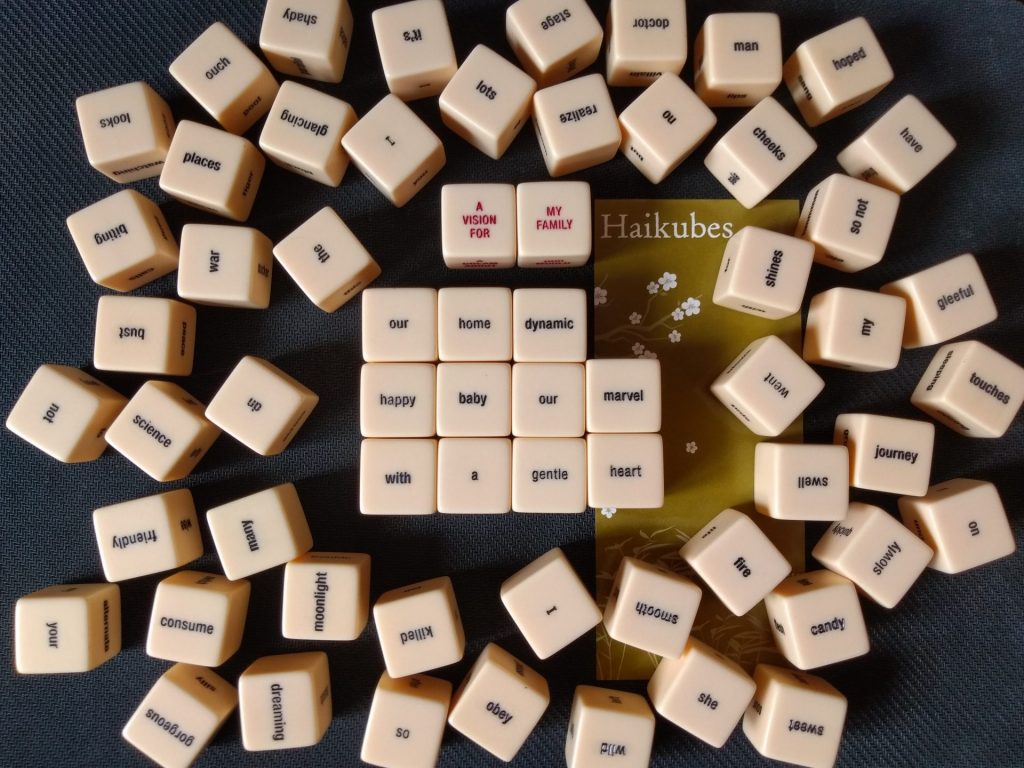
Pros – Poetry tends to convey more information and emotions than its reduced word-count suggests, prompting the reader’s imagination to fill in the gaps and interpret the meanings. The process of creating a cohesive narrative from a handful of dice involves a similar process – reading a lot from comparatively little – and this mirrored process of creative interpretation can help the writer to create evocative poems, whether using the dice directly or as starting points.
Cons – Haikubes are, admittedly, the only poetry-specific dice that I know of and staring at a collection of up to sixty-one words trying to write a poem of set syllables can be an incredibly daunting process. There’s also nothing stopping you from writing poetry using any of the other dice types.
Virtual Dice
What are they – App-based alternatives to Free-Form Picture Dice.
How do you use them – Tap the screen or shake the device to ‘roll’ the dice. Once ‘rolled’ you can move individual dice on the screen about to organise them how you wish.
Example – Rory’s Story Cubes has an inexpensive app version that provides the original nine dice starter set and the three dice Clues booster set. Prices aren’t too dear to purchase additional nine and three dice sets to add them to the mix. A nice feature is that you can press and hold an individual die to ‘re-roll’ it, letting you change a single image if it isn’t working with your story.
Example – The Story Dice app is a free-to-use alternative with the ability to ‘roll’ up to ten dice at a time, from the categories General, Kids, Mystery and Star Wars (honestly, Star Wars loves dice). It’s fun to shake your device to ‘roll’ the dice, although dice frequently get stuck on top of one another at cocked angles so you’ll have to individually move them apart or ‘roll’ again. But with ten dice and four categories to select from this is an excellent free-to-use app.
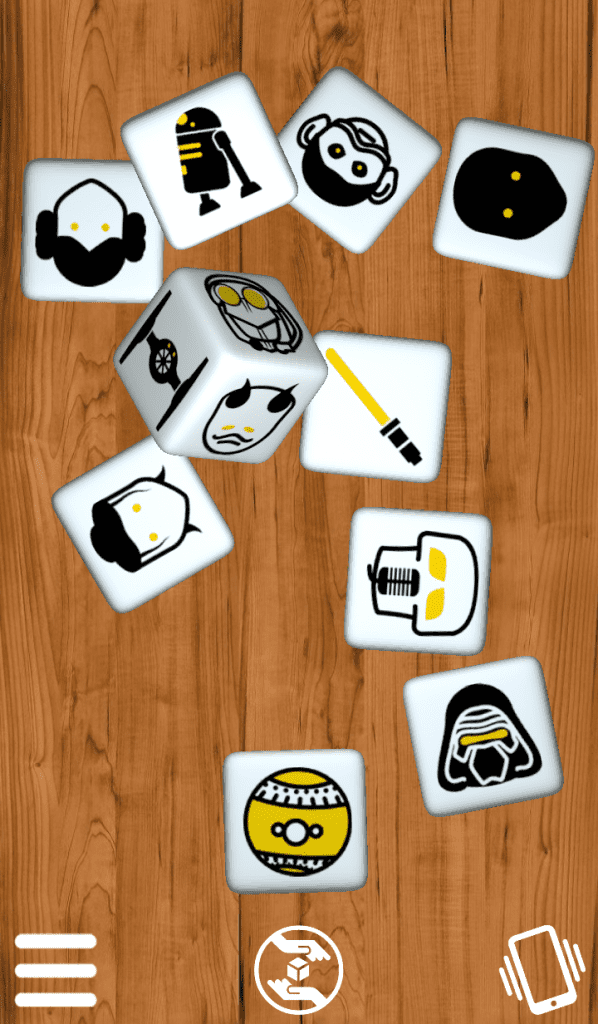
Pros – App equivalents are generally much cheaper and often provide a greater range of available images from the start. They also don’t take up any physical storage space, making them especially good for travelling.
Cons – The tactile element is largely absent since part of the fun comes from physically handling the dice (although shaking a device and dragging dice around a screen does have a degree of tactility to it). There are generally fewer options for how you use them: all nine dice will be virtually rolled at the same time so you can’t build a story bit by bit. Currently Free-Form Picture Dice are the only options on the market. Finally, working from a screen might present the temptation of using the tablet/phone for other purposes; physical dice give you something to focus on away from other distractions.
Story Sheets
What are they – Regular dice and a sheet of paper with a grid drawn on it, the columns numbered one to six and the rows labelled with story structural elements such as setting and character. Each cell within the grid then has a word or a picture in it.
How do you use them – Roll the dice for each story element and look up your results in the table.
Example – Below is a quick example of a Story Sheet that I’ve made. You’d roll a die six times (or six dice once) to get each element of the story.

Anyone familiar with role-playing games may find this format familiar: Story Sheets are very similar to results tables you might encounter in a traditional RPG, or one of the many prompt tables found in journaling RPGs for solo play.
Pros – Story Sheets are common classroom teaching aids so Meeple Mountain’s resident elementary school teacher, Ashley Gariepy, has kindly offered to provide some of her expert insight:
Mme Ashley: Story Sheets are a super popular tool for Language Arts/Writing because, in comparison to the other types of dice mentioned, they are inexpensive, can easily accommodate large groups (so that each student has their own sheet), and can be a little easier for teachers (who aren’t gamers) to implement into their teaching. They also encourage creative writing in a fun way: kiddos love getting to roll dice during instructional time and these sheets help students struggling to get their creative juices flowing.
As Ashley says, Story Sheets are inexpensive and can be an incredibly flexible option for those on a budget. A quick search online will produce plenty of Story Sheet variants for you to try, most are free but you can also pay for more professional looking ones. There’s no need to pay for sets of custom dice, you probably have some dice and paper already. Unlike the other options, Story Sheets are only limited by your imagination:
– Give them a theme if you’re playing with a child who has a favourite topic.
– Challenge yourself with words or ideas that you wouldn’t normally write about.
– Dice with more than six sides can be used with larger grids for more options.
– When playing with other people, design custom grids for each other (thanks to David McMillan for this idea).
Cons – Story Sheets ask that bit more from you: you need to find or create the sheets and then once you’ve rolled your dice it’s hard to keep just the result in your mind when there’s a whole grid of possibilities right there in front of you (although who says you’re restricted to what you rolled – if something else inspires you or your child then don’t let the dice hold you back!). Also, regular numbered dice are not as exciting as picture or word dice and it can be harder to keep younger minds interested – the physicality of custom picture/word dice means that the ideas you come up with are grounded in something real.
And they all lived…
So there we have it, six different ways of using dice to tell stories: from custom picture dice to regular number dice and a word grid. Have you seen any other types out there? Let us know in the comments!


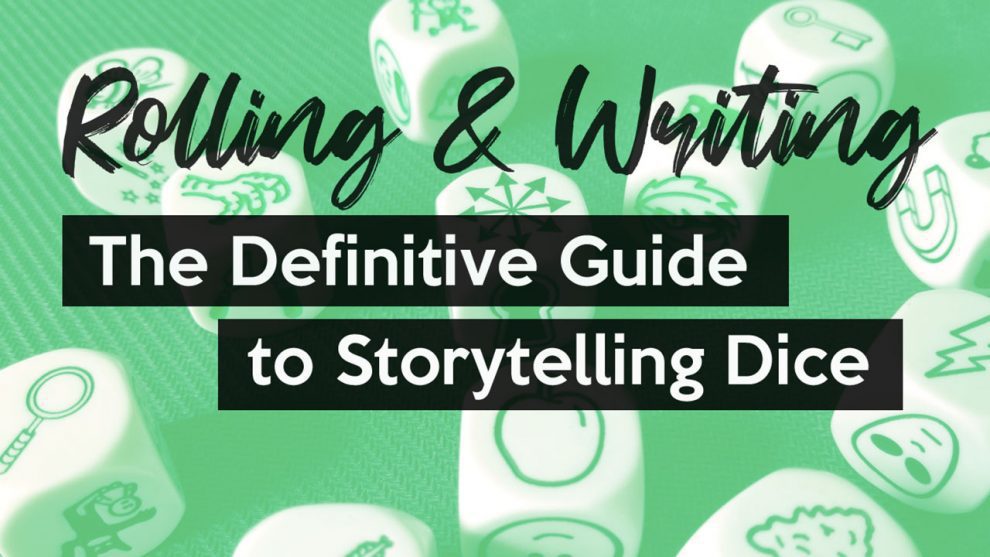



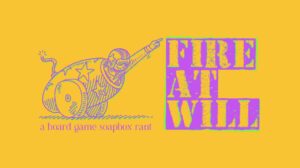
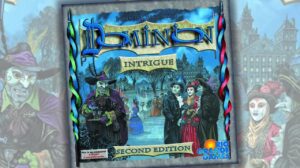
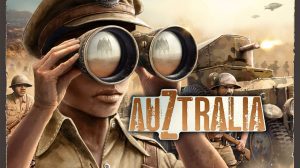
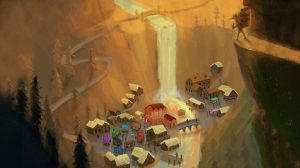




Add Comment